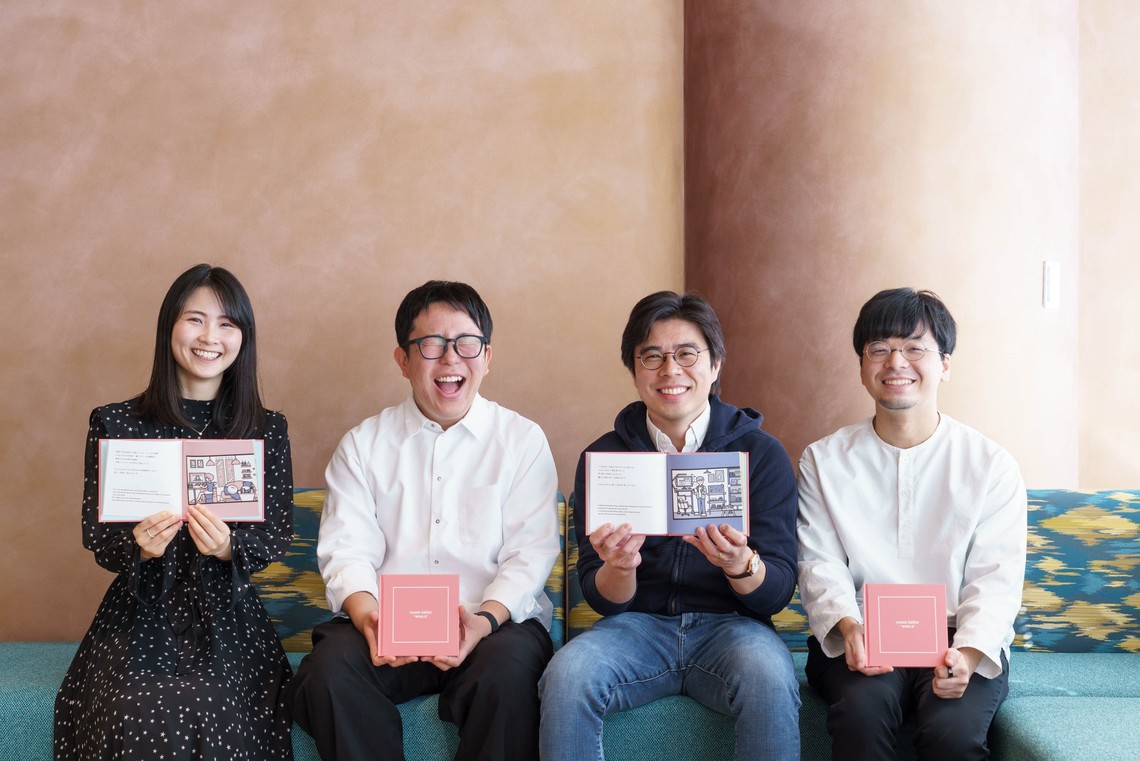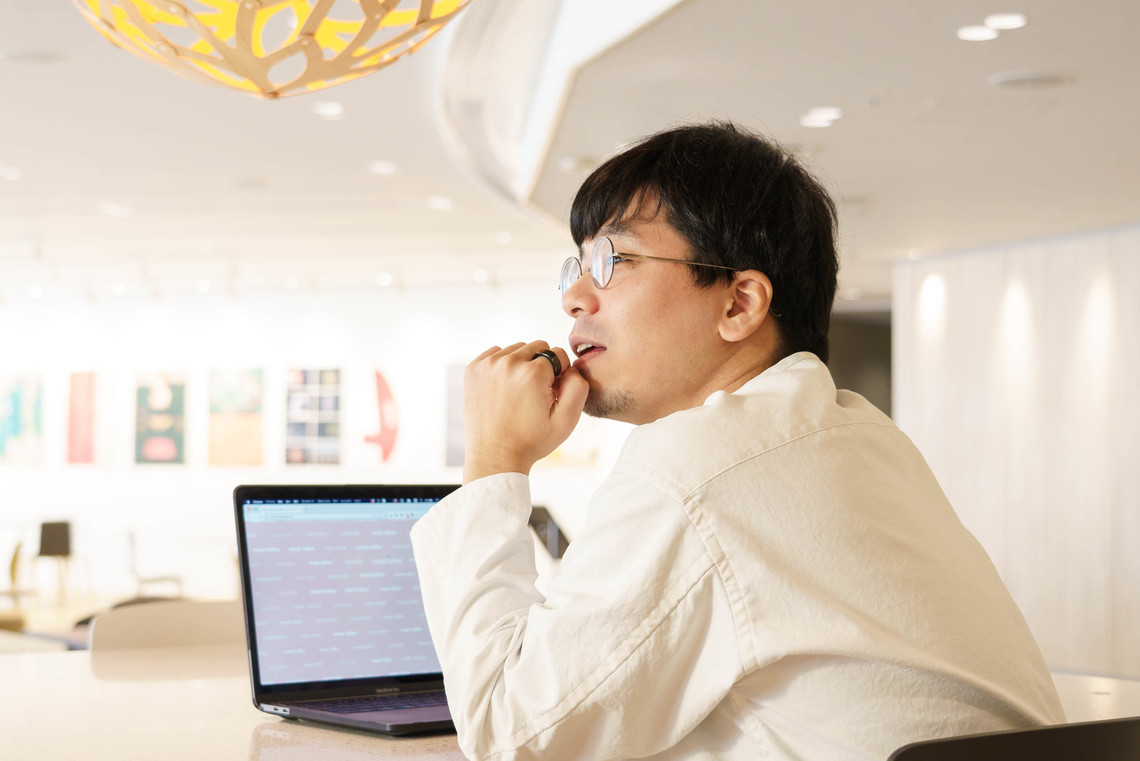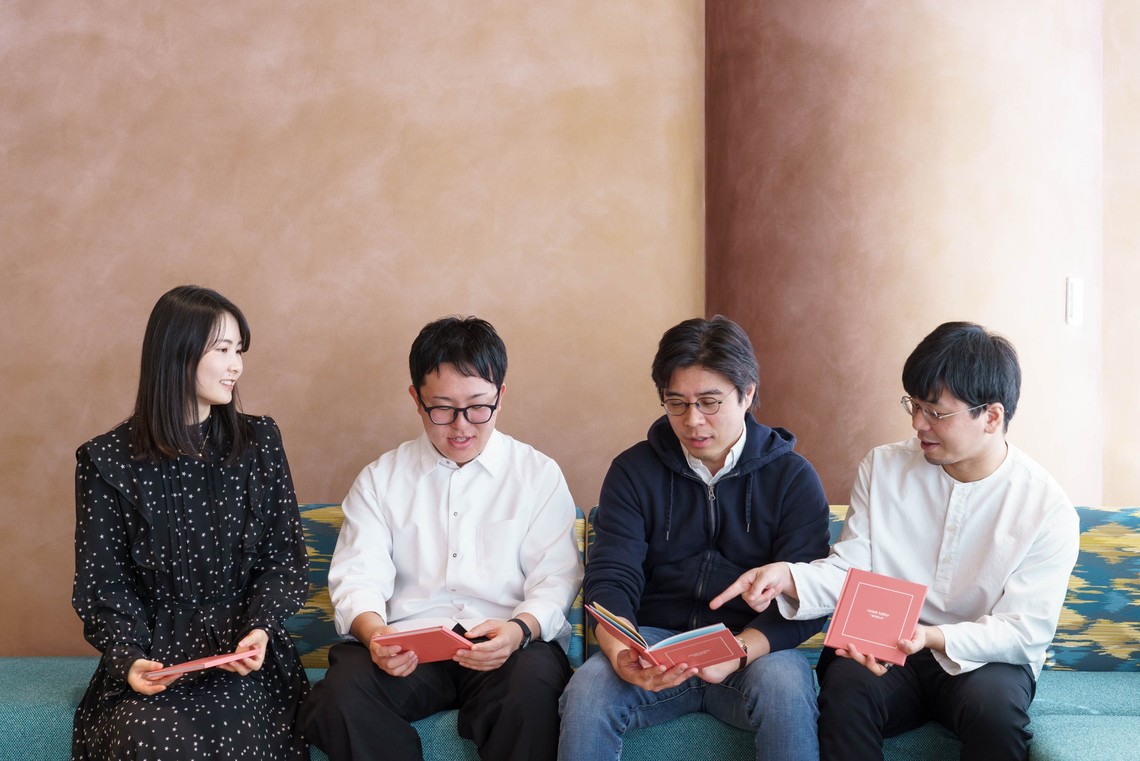Since its founding in 1954, Wakabayashi Equipment Industry has long been cherished in the community as a professional undertaking the design and construction of lifeline facilities such as water, air, and gas.
Aiming for 100 years of 'triple win' management, the company formulated a new concept and management strategy. To embody this, it developed the space subscription service 'room tailor' in collaboration with Dentsu Inc.

【Participating Members】(From left) Narumi Kanetsuka, Taiga Yamaguchi, Aaron Zhou, Toshiya Yui
【What is room tailor?】
A space subscription service by Wakabayashi Equipment Industry. Set your own theme for living, and professional advisors—creators, actresses, influencers, fitness models, and others active at the forefront of their fields—select the necessary furniture and appliances to match that theme. After moving in, you can have regular online consultations with your advisor, allowing you to enrich your life more than ever before.
https://roomtailor.jp
User-centric development by a young creative team
──First, please introduce yourselves.
Aaron: I'm with Dentsu Inc. BXCC (Business Transformation Creative Center), primarily serving as a business development producer in the new business development domain. Beyond traditional advertising work, I also handle many projects like this case study, where I collaborate with executives to build businesses.
Yamaguchi: I'm an Art Director in the same department as Aaron. Much of my work involves new business development and visualizing future service concepts from the end-user's perspective.
Yui: At BXCC, I primarily handle planning and designing experiences for apps and physical spaces. I also work on projects utilizing technology as a creative technologist.
Kanezuka: I work in the Public Account Center, supporting public clients like central government ministries and local governments. I help solve their challenges by collaborating with private companies to develop new businesses and expand existing ones.
──What perspective guided the selection of members for this project?
Aaron: First, new ventures don't take shape until completion and don't generate immediate revenue, so visualizing the company's vision and value embedded within them is crucial. That's why we brought in Mr. Yamaguchi as an art director—a professional in design and visualization.
Mr. Yui was introduced to me by my supervisor as a UI/UX specialist. Since I anticipated we'd need someone for website implementation and service experience design this time, he was a very reassuring presence.
Aaron: And Mr. Kanatsuka volunteered to join us, right?
Kanetsuka: That's right. At the time, much of my work involved combining assets within the Dentsu Group to propose solutions for client requests. I wanted to learn how to build business using a slightly different approach. I happened to learn about this project at just that moment and contacted Aaron, eager to take on the challenge.
Aaron: Since Mr. Kanatsuka excels at research, he gathered the essential facts needed to move new business development forward—like investigating the market environment and uncovering user insights. Everyone has different affiliations and areas of expertise, but one common element is that we're all a group of highly motivated people (laughs). Developing new businesses is indeed a very challenging journey to bring them to fruition, and many projects stall before they take shape. That's precisely why I feel the strong determination and passion of the members involved become the driving force behind the project.
Yui: Personally, I think the small team size was beneficial because it allowed us to move things forward quickly without unnecessary communication overhead. Aaron also gave us younger members the freedom to operate, enabling us to develop the new business with the speed and agility of a startup.
Yamaguchi: That's right. Especially this time, Aaron, our leader, took the lead and genuinely approached the new business from the same perspective as the client. Seeing that inspired us, the creative team primarily made up of younger members.
Kanezuka: Since the theme was "daily life," something close to everyone's heart, we all naturally took ownership and shared ideas freely, didn't we?
Yui: Exactly. We progressed with service development and experience design by overlaying aspirations like "This is the kind of life we want to live" from the perspective of ordinary residents, or challenges like "This part of house hunting is inconvenient," with Wakabayashi Equipment Industry's strengths and unique features.
The strength of being a "down-to-earth company" in new business development
──From the creative team's perspective, what did you see as Wakabayashi Equipment Industry's strengths and unique characteristics?
Aaron: From the perspective of new business development, as I mentioned in my previous conversation with President Wakabayashi, I believe the strength lies in being a "family-owned company." New ventures aren't about chasing immediate profits; they're projects that shape the future years ahead. Yet, I've witnessed countless cases where new ventures, developed over one or two years, stall because the top management or leadership changes, citing a lack of profitability as the reason. Family-owned companies, however, often have the same family involved in long-term management strategy. This allows them to take on transformative challenges with a long-term perspective, making them exceptionally well-suited for new ventures.
Kanezuka: Furthermore, as professionals responsible for designing and constructing lifeline facilities like water, air, and gas, possessing the technology that underpins society's infrastructure is another strength. When we set the ideal of "Focusing on Living," we have the capability to concretize and deliver that vision. It's precisely because we have the power to give shape to conceptual ideas that the concept itself gains persuasive force.
Aaron: It's a company with its feet firmly planted on the ground. The foundation of our existing businesses, which have long supported regional infrastructure, becomes a major asset when challenging new ventures.
Yamaguchi: This became clear as we progressed through the project. The fact that Wakabayashi Equipment Industries owned facilities like dormitories allowed us to conduct the proof-of-concept experiments smoothly, which was a real advantage. Thanks to that, we were able to refine the service design through user testing.
Yui: Indeed, since countless ideas stem from the "Theme for Living" concept, narrowing down which themes resonate most with users was crucial.
(Continued in Part 2)













